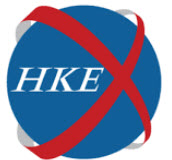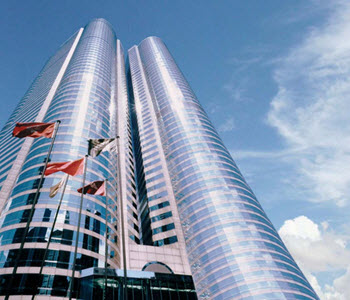 The Stock Exchange of Hong Kong Limited (SEHK) – commonly referred to as the Hong Kong Stock Exchange – is one of three stock exchanges in China. It is the second largest of these three in terms of market capitalization, which means that it outranks the Shenzhen Stock Exchange but not the Shanghai Stock Exchange. SEHK is also the third largest stock exchange in Asia and the sixth largest in the world.
The Stock Exchange of Hong Kong Limited (SEHK) – commonly referred to as the Hong Kong Stock Exchange – is one of three stock exchanges in China. It is the second largest of these three in terms of market capitalization, which means that it outranks the Shenzhen Stock Exchange but not the Shanghai Stock Exchange. SEHK is also the third largest stock exchange in Asia and the sixth largest in the world.
A vast majority of all companies listed on SEHK are Hong Kong based or based in mainland China. Less than 10% are foreign companies.
Short facts about the Hong Kong Stock Exchange
| Name in English | The Stock Exchange of Hong Kong (SEHK) |
| Location | Hong Kong |
| Currency | Hong Kong Dollar (HKD)
Renminbi (CNY / CNH) United States Dollar (USD) |
| Founded | 1891 |
| Owner | Hong Kong Exchanges and Clearing Limited |
Trading hours on a trading day
| Pre-opening auction session | 09:00 am – 09:30 am | The opening price of a security is reported shortly after 09:20 am. |
| Morning session | 09:30 am – 12:00 noon | |
| The extended morning session,
also known as the lunch break |
12:00 noon – 01:00 pm | Trading is only possible in specifically-designated securities (currently two ETFs). |
| Afternoon session | 01:00 pm – 04:00 pm | The closing price is reported as the median of five price snapshots taken every 15 seconds from 03:59 pm to 04:00 pm. |
Trivia: SEHK used to have a two-hour long lunch break between 12:30 pm and 02:30 pm. It was the longest lunch break among the world’s 20 major stock exchanges. I was shorted to 90 minutes in 2011 and 60 minutes in 2012.
Physical location
There is a small physical trading floor in the building complex Exchange Square in central Hong Kong, but free float trading is largely a thing of the past for SEHK and physical trading currently accounts for less than 1% of the total trading volume at the SEHK.
Trivia
- The is a close-in-price rule for limit orders, which must be within 24 ticks of the current price. (Individual brokers sometimes have even more stringent requirements.)
- At SEHK, a stock would have to consistently trade below HK$0.50 to be considered a penny stock by traders. It is not uncommon at all for the shares of large and well-established companies to trade below HK$4 at this exchange.
Hang Seng Index
 One of the most well-known indices based on the Hong Kong Stock Market is the Hang Seng Index, a freefloat-adjusted market capitalization-weighted stock market index based on 50 companies listed and traded on the Hong Kong Stock Exchange. It is considered the main indicator of the overall market performance in Hong Kong, and its 50 constituent companies represent more than half of the total capitalization of the exchange.
One of the most well-known indices based on the Hong Kong Stock Market is the Hang Seng Index, a freefloat-adjusted market capitalization-weighted stock market index based on 50 companies listed and traded on the Hong Kong Stock Exchange. It is considered the main indicator of the overall market performance in Hong Kong, and its 50 constituent companies represent more than half of the total capitalization of the exchange.
A company must be among those that comprise the top 90% of the total value of all ordinary shares on SEHK to even be considered for HSI inclusion. It must also be among those that comprise the top 90% of the total turnover at the exchange. Generally, only companies with a listing history of 24 months or more are considered, but exceptions can be made for newly listed large-cap stock that fulfills certain criteria regarding average MV rank.
Among eligible candidates for the HSI, the final selection is made based on market capitalization, turnover ranking, financial performance, and representation of the respective sub-sectors within the HSI.
HSI debuted on 24 November 1969. The idea was to create a “Dow Jones Index for Hong Kong”. HSI is compiled and maintained by Hang Seng Indexes Company Limited, a subsidiary of Hang Seng Bank. Hang Seng Bank is held in majority by British financial firm HSBC.
History of the Hong Kong Stock Exchange
Securities were traded in Hong Kong by the mid 19th century, but it would take until 1891 before the Association of Stockbrokers in Hong Kong was created and a formal stock market established. Back then, Hong Kong was a British Crown Colony.
In the 1950s, Hong Kong was rapidly industrialized, with a focus on textile exports, manufacturing industries and re-export of goods to China. The economy flourished and by the early 1970s there were four different stock exchanges in operation in Hong Kong. In 1980, they were unified into The Stock Exchange of Hong Kong where trading premiered on 2 April 1980.
Important milestones
| April 1986 | Computer-Assisted trading system introduced |
| February 1988 | Listing of the first derivative warrant |
| June 1992 | The Central Clearing and Settlement System (CCASS) was introduced. |
| July 1993 | Listing of the first China-incorporated enterprise (H share). |
| November 1993 | The Automatic Order Matching and Execution System (AMS) was introduced. |
| January 1994 | Premiere for regulated short selling |
In the early 1990s, a and A few years later, the first off-floor trading terminals were installed in broker’s offices.
Growth Enterprise Market (GEM)
The Hong Kong Exchange launched the Growth Enterprise Market (GEM) in November 1999. It is intended for growth companies that do not fulfill the standard SEHK requirements regarding profitability and track record.
This article was last updated on: February 25, 2023
